15 Ways to Play in the Snow This Year
After a challenging summer and fall, we're all wondering what the ski season has in store. Don't worry: resorts are working hard to open and ensure a safe experience for everyone, and there are plenty of other ways to delight in the white stuff. Here's the lowdown.Ěý
New perk: Easily find new routes and hidden gems, upcoming running events, and more near you. Your weekly Local Running Newsletter has everything you need to lace up! .
While you won’t be able to pile into a gondola with randos or share nachos at the lodge, you’ll still be able to make the most of this season. Whether it’s abiding by Covid-19 protocols at a resort, safely exploring the backcountry, snowmobiling to hot springs, or taking up skate skiing, there’s no shortage of ways to get out there this winter.
1. Get Backcountry Educated
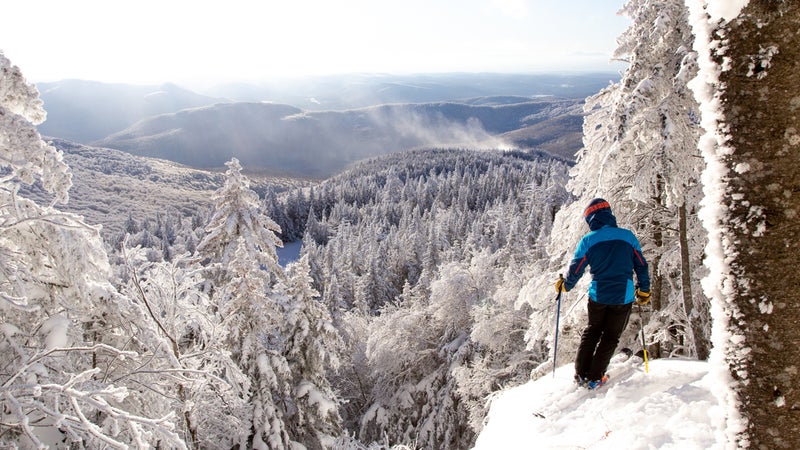
With built-in social distancing in uncrowded terrain, heading out of bounds will be popular this winter. If you’re trying it for the first time or it’s been a while, signing up for a backcountry safety course is essential. At in Wyoming, a debuts this winter with two group clinics, slated for January 12 to 15 and February 1 to 4 (from $1,760). The resort’s expert guides will also offer one-on-one clinics on avalanche safety, route selection, and touring skills in the area’s first-rate sidecountry terrain.
At Vermont’s , 24 miles east of Burlington, you’ll need to purchase a ticket to access its backcountry (from $13), but its beginner-friendly terrain makes it a good place to learn. You can rent touring gear, take a lesson, sign up for a guided group or private tour, and even book one of two backcountry huts.Ěý
If you’re on the West Coast, leads everything from sidecountry tours out the gates of (from $105) to Avalanche 1 courses ($525) to introductory backcountry field days (from $199), where you’ll learn the basics of route planning, avalanche safety, and tips on efficient skinning.
Many backcountry courses will be virtual this winter because of the COVID-19 pandemic. The ’s Level 1 course will be taught by both the in Vail, Colorado ($565), and the in Bellingham, Washington ($435). Classwork can be conducted virtually via Apex’s Flex option, while the AAI will host evening Zoom meetings. On-site field days will be held in the Vail area and the mountains east of Bellingham or Seattle, respectively.Ěý
2. Book Your Own Ski HillÂ
In southern Utah’s Tushar Mountains, offers a splurge-worthy option to rent out the entire ski area for you and a few friends for the day. It’ll cost you $10,000, but includes private access to 650 acres, five lifts, and some excellent tree skiing. For other hills you can have to yourself, check out our list here.Ěý
3. Ride a Fat Bike
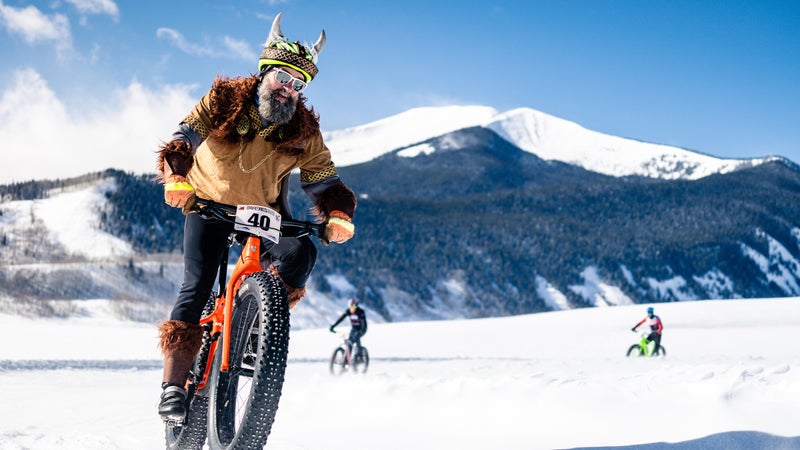
From Flagstaff’s and outside Ogden, Utah, to New Hampshire’s , many resorts and nordic ski areas are opening up to fat-tire bikes as a way to get more people outside this winter.ĚýIf you want to rip fresh corduroy on a bike, °ä´Ç±ô´Ç°ů˛ą»ĺ´Ç’s grooms 22 miles of slopes and the has six miles of trails on local easements for fat biking. In town, the rents winter bikes (from $40).ĚýFor a downhill-only experience, northern Minnesota’s (day pass from $30) has lift-served fat biking this winter on three select trails totaling three miles, or test your endurance on its 37-mile nordic-trail system ($17), which is also open to fat bikers.Ěý
4. Ski Early…
This winter, in Colorado will offer First Tracks lift tickets for those who want to load into the gondola starting at 7:45 A.M. You’ll get access to the Sundown Express, Sunshine, and South Peak lifts 45 minutes before everyone else (from $39).
5. … Or Late
Strap on a super-strength headlamp and take the Ramcharger 8 lift at Montana’s . From Wednesday through Saturday, join a private guide starting at 6 P.M. for night skiing, a new offering at the resort (from $425 for up to seven people). You’ll have select runs to yourself as the moon rises over Lone Peak.Ěý
6. Stay in Your Own Hut
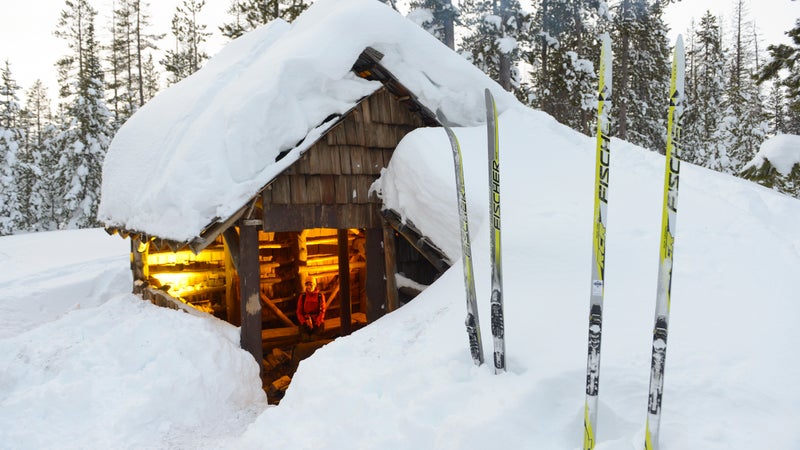
Bunking in a communal-backcountry hut likely won’t fly this winter. So it’s a good thing some are sized just right for a small group and can be booked in their entirety.
In 2018, the  opened in °ä´Ç±ô´Ç°ů˛ą»ĺ´Ç’s San Juan Mountains, just half a mile from Highway 550 south of Red Mountain Pass, and not far from . The sleek, solar-powered cabin sleeps eight in separate quarters and can be booked for private groups (from $480) or as part of a guided touring trip with (from $460 per day, plus the cost of the hut).
In Montana’s Tobacco Root Range, 90 minutes west of Bozeman, the sleeps eight in a cozy 20-foot retreat set at 8,500 feet. has exclusive access to 14,000 surrounding acres, which includes everything from low-angle trees to steep couloirs. Book a private, guided, fully catered excursion (from $225 per person), or overnight in the yurt (from $360 per night). Plan a resort day at (from $35), 70 miles east, after your trip.
Part of the , the tiny 250-square-foot , located in the state’s Northeast Kingdom and a five-minute walk from the property’s parking area, fits six people in a sleeping loft and downstairs futon (from $80). There’s easy access to snowshoeing and snowmobiling trails, backcountry terrain, and resort skiing at , 50 minutes away (from $56).
7. Learn How to Winter Camp
Near in Northern California, book a guide from for an overnight snowshoeing expedition. You’ll hike into the backcountry and set up a base camp. Gear, meal preparation, and just the right amount of instruction are included (from $325).Ěý
Or sign up with the , a Seattle-based organization leading an online winter-camping course in December (from $75), paired with an overnight snowshoeing and camping field trip to Mount Rainier in February.
It may be hard to imagine winter camping within Minnesota’s sprawling , but gear sleds and a proper tent setup make it possible to explore the 1.1 million acres without advanced nordic-skiing skills. Sign up for a guided trip with Ely outfitter . With a starter package, a guide selects a good spot, helps you haul in your equipment, and sets up camp—all the while teaching you winter-camping skills—and then leaves you for the night (from $250). The next day, you can ice-fish for trout or hit up the area’s extensive cross-country trails.Ěý
8. Snowmobile or Dogsled to Hot Springs
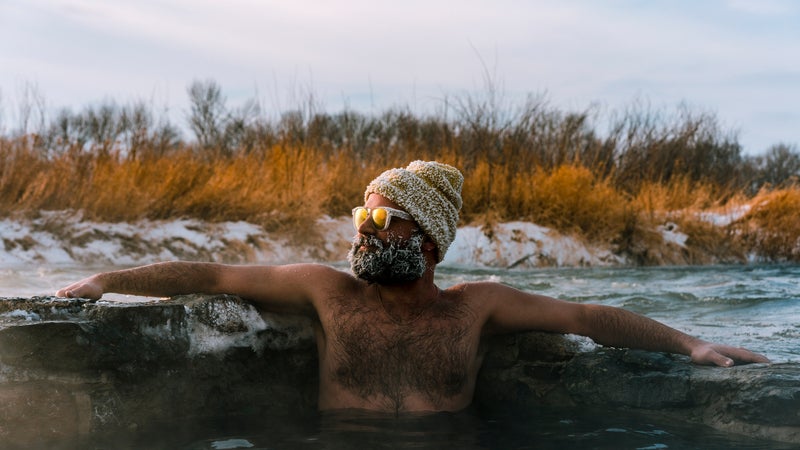
Guides from Idaho’s , 116 miles north of Boise, lead snowmobile tours (from $249) to four steaming mineral pools at , which plans to reopen this winter after a long COVID-19 closure. (Check its opening status before you go.)Â
In Wyoming, the offers a 20-mile guided snowmobile tour in that ends up at , a developed pool enhanced by the Civilian Conservation Corps in 1935 (from $275). For a more luxurious experience, the 40-suite (from $800) in Jackson runs daylong guided snowmobile or dogsled excursions to Granite (from $700 per couple).
Deep in , Montana’s largest national forest, the 3.6-mile traces along the Lower Miner Lakes to , located four miles north of ski resort. Rent your snowmobile in the town of Dillon from (from $190), which can arrange delivery, and spend the night at one of 12 rustic cabins at the springs (from $80).Ěý
9. Skin Up at a Resort
If it seems counterintuitive to make your own way uphill at a place where chairlifts exist, then consider this: unlike the backcountry, resorts conduct avalanche mitigation, so you can minimize the worry and tour in a safer setting. Also, many resorts allow uphill traffic outside of normal lift operating hours, so you can avoid crowded slopes and squeeze in a lap or two before or after your workday.Ěý
°ä´Ç±ô´Ç°ů˛ą»ĺ´Ç’s is known for its liberal uphill policies at all four of its mountains. At Snowmass, , and , you can skin up all day along designated routes marked by orange signs. At Ajax, you have to stick to the early or late shift—before 9 A.M. or after 4:45 P.M.—when the lifts aren’t running. If you opt for dawn patrol, après at the outdoor deck at , the restaurant located midslope on Aspen Mountain, for coffee and oatmeal pancakes.Ěý
A few other resorts that allow uphill access on designated routes throughout the day: in California, in Washington, and in Maine. Not sure if your local hill allows skinning? The keeps an updated list of resort policies.
10. Book a Private Snowcat for Your Pod
Why not use social distancing as an excuse to splurge on your own private tractor for a day in the backcountry? At Maine’s , you can book a private cat Monday through Thursday for up to 12 people to lap the sidecountry terrain on Burnt Mountain (rates unavailable as of press time).
At , a family-friendly destination near Tahoe, California, the resort-operated nine-person snowcat takes skiers and riders out the gates and across 750 acres of nearby Ellis Peak for striking views of the lake (from $3,000 for a group).Ěý
11. Take Up Skate Skiing
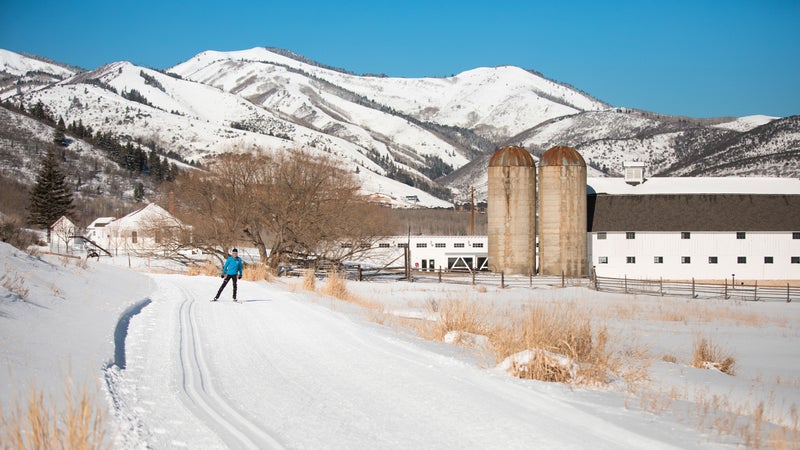
You won’t find a more full-body winter workout than skate skiing. But you’ve got to get your technique down to be efficient and smooth, so take a lesson if you’re new to the sport. The outfitter in Park City, Utah, offers private and group skate-skiing lessons at , as well as guided outings on cross-country skis along the area’s trails or into the Uinta Mountains (from $50).
Twenty-five miles south of , one of the High Peaks in New York’s Adirondack Mountains, take a private or group skate lesson (from $25) on 34 miles of trails at newly renovated , and ski to a hut where waffles are served by a crackling fire.
12. Shred at a Backcountry Resort
Imagine a ski area with no chairlifts and no grooming. But there’s avalanche control, pre-set skin tracks, guiding, rental gear, and a base lodge. That’s the idea behind , which opened last winter for a 14-day trial season with 400 patrolled acres on a ranch north of Kremmling, Colorado, 40 minutes southeast of . Unlike cross-country resorts such as in West Virginia, Bluebird is all about big vertical. The resort is set to reopen at a new, nearby location on December 24 with 4,200 acres and a broader range of slope angles. Advance reservations are required for non-pass holders, since only 200 skiers and riders are allowed on the mountain each day. New this year, you can park your van or RV in the lot for slopeside lodging (day passes from $50, season passes from $350).Ěý
13. Snowshoe a Frozen River
About six miles south of , on Minnesota’s North Shore, snowshoeing gets a lot more exciting with the help of frozen waterways. Hike up the ice-shrouded Onion River, whose trail is accessed via the Ray Berglund Wayside, before passing through a canyon lined with towering icicles. Rumor has it the locals ski down the frozen waterfalls, but we recommend sticking to snowshoes. , nine miles south from the resort, rents equipment (from $18).
14. Explore the Midwest’s BountyÂ
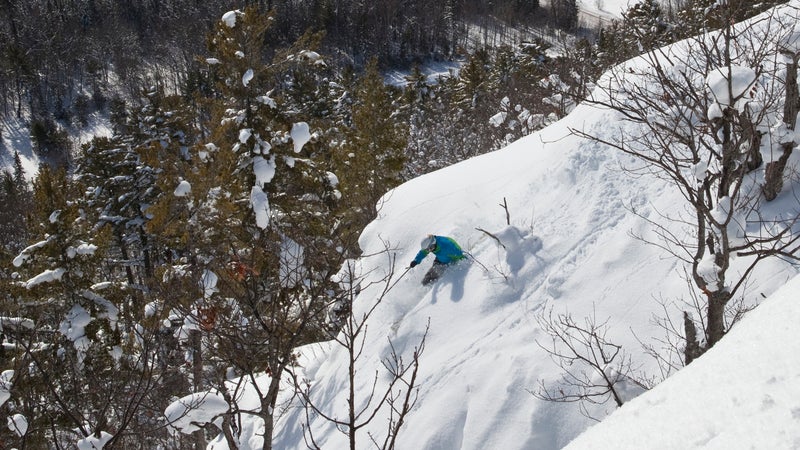
Yes, Michigan has backcountry skiing. What Keweenaw Peninsula lacks in vertical drop it more than makes up for in snowfall, thanks to its northern location on the Upper Peninsula and the surrounding waters of Lake Superior. Here you’ll find short, steep pitches and some of the deepest powder in the Midwest (more than 300 inches fell last year—an amount that rivals Telluride, Colorado, and Park City, Utah).Ěý
Near the tip of Keweenaw is (from $85). The resort has 585 acres of ungroomed runs, including short backcountry laps through widely spaced glades and slopes with 900 vertical feet. “The snowpack here has a bunch of moisture, so the snow sticks to everything, and there are tons of features to jump off,” says Collin Rehm, a freesking coach in Jackson Hole who grew up in Michigan and spent four winters skiing the UP. After a day on the slopes, take a soak at the on-mountain .Ěý
If you’re looking for more serious Midwestern backcountry, head 107 miles southwest to the hills around Michigan’s , which has four ($68) across 60,000 acres that can be strung together for a proper hut-to-hut ski tour.
As for other unexpected backcountry destinations, East Coast skiers should check out newly gladed backcountry zones across New Hampshire and western Maine, including , near in the town of Franconia, and the in Rumford, 72 miles north of Portland. They’re part of a project by , an organization that’s working with private landowners and local conservation groups to develop more of these areas across the two states.
On the West Coast, in a deep-snow winter you can backcountry ski an hour east of Los Angeles. You can summit crests like 10,064-foot Mount San Antonio and 8,985-foot Telegraph Peak right out the gates of in the San Gabriel Mountains.
15. Party on a Tube
Après-ski dance parties in crowded bars may not be a great idea this winter, but you can still boogie under disco lights—on an inner tube. You’ll find cosmic night-tubing sessions at in Northern California, Oregon’s , °ä´Ç±ô´Ç°ů˛ą»ĺ´Ç’s , and Pennsylvania’s .Ěý


